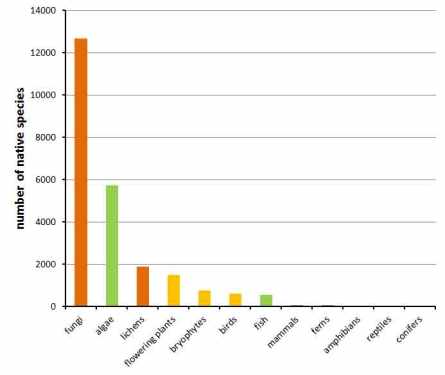There is now less than six months to go before the next general election in the UK and I am going to write a few posts over the coming months evaluating the prospects for the environment that emerge from the political debate. The rise of UKIP means that this is going to be an election like no other that we have experienced in the UK and, inevitably, Europe is going to be high on the agenda. Add in the inevitable concerns about the economy and the health service and the environment will probably slip down the agenda to that part of each party’s manifesto where rhetoric rules over reality.
Except that the focus on Europe and the economy means that the outcome of this election will have enormous implications for the UK’s environment. First, most of our environmental legislation derives, ultimately, from the European Union (EU) and, second, implementing environmental legislation requires a strong, well-funded regulator. We go into the next election campaign aware that leaving the EU is a genuine possibility and, consequently, be aware of the implications. At this stage, of course, we don’t know what “leaving the EU” really means. The UK could, in theory, leave the EU but remain part of the European Economic Area, members of which voluntarily adopt EU environmental legislation. Another possibility is that we leave the EU and EEA but retain the framework of environmental law that we have inherited from the EU (because this has been transposed into UK legislation).
My view is that the environment is one of the principal beneficiaries of UK’s membership of the EU. This is partly because this is an area of policy which benefits from a joined-up approach: the state of the North Sea, for example, depends on the individual environmental policies of UK and six other countries which share its coastline, plus Switzerland (in the EEA but not the EU) and Luxembourg, both wholly or partly in the Rhine catchment. It is also influenced by the Baltic Sea, which is bordered by a further seven countries, all but Russia EU members. The UK’s use of the North Sea requires a level of agreement amongst these countries that the EU facilitates. This is not the only example: air pollution does not respect national boundaries either, and there are river catchments in Ireland which straddle the north-south border and so benefit from a shared approach to management.
I also believe that the EU provides a better forum for discussing and developing environmental legislation. Domestic politicians have been, rightly, focussed on the economy and health service. I do not believe that the level of protection afforded by the Water Framework Directive, for example, could have been produced by Westminster politicians working in isolation because of the amount of parliamentary time it would have required. Watching the way that non-scientists such as Nigel Lawson have hijacked and distorted the debate on global warming in the UK also makes me sceptical about whether Westminster, alone, has the ability or integrity to evaluate new environmental legislation objectively.
I use the term “Westminster” very loosely here as the environment is one power that has been devolved to Scotland, Wales and Northern Ireland. In practice, all four administrations are implementing the same set of EU Directives which ensures a joined-up approach. I know, from meetings I have attended, that there is a centrifugal tendency amongst the administrations, reflecting a legitimate desire to adapt environmental policy to the different conditions of each of the UK’s four constituents. The framework of EU policy, however, provides a centripetal counterweight to these tendencies.
My worry is that our country is ill-served by its politicians with respect to environmental policy. We have a largely London-based political class, a large proportion of whom have little scientific training and many of whom have reduced “Europe” to a political football. Differences in how Scotland and England manage the environment may appear abstract to those based in London (or Edinburgh) or subservient to a wider ideal. However, these issues take on a much larger significance to anyone who lives in the catchment of the River Tweed, for example. What happens on the north side of the river has implications for what might happen further downstream on the south side. The same applies to the River Foyle and many other examples around the UK.
We will, I am sure, hear much rhetoric about “global warming” in the run up to the next election. Remember that the biggest danger to the environment may be the hot air produced by the politicians themselves.


